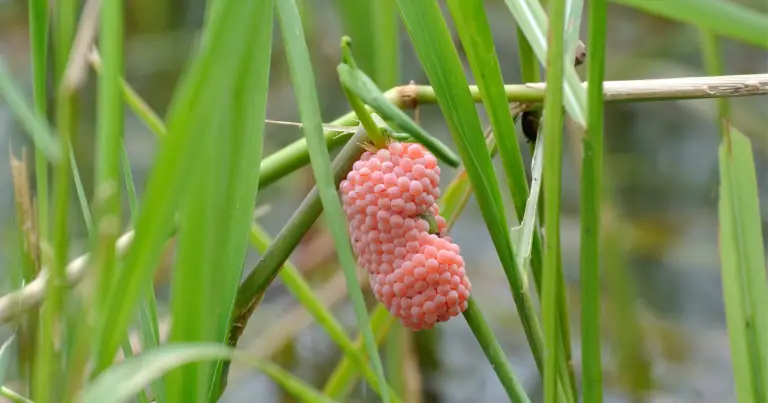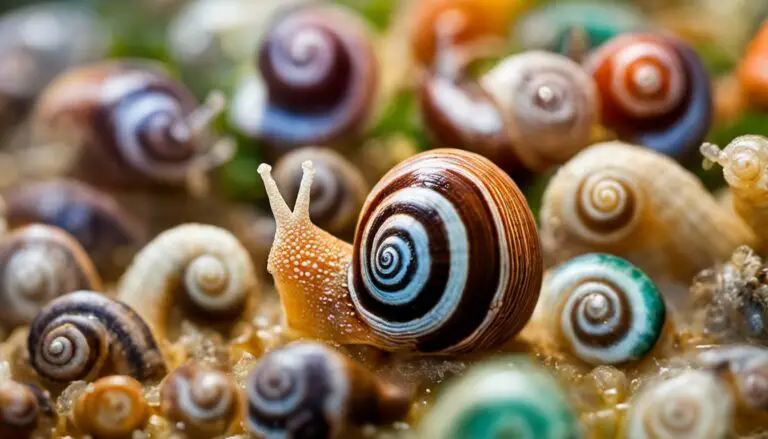Ramshorn Snails: Comprehensive Care and Maintenance Guide
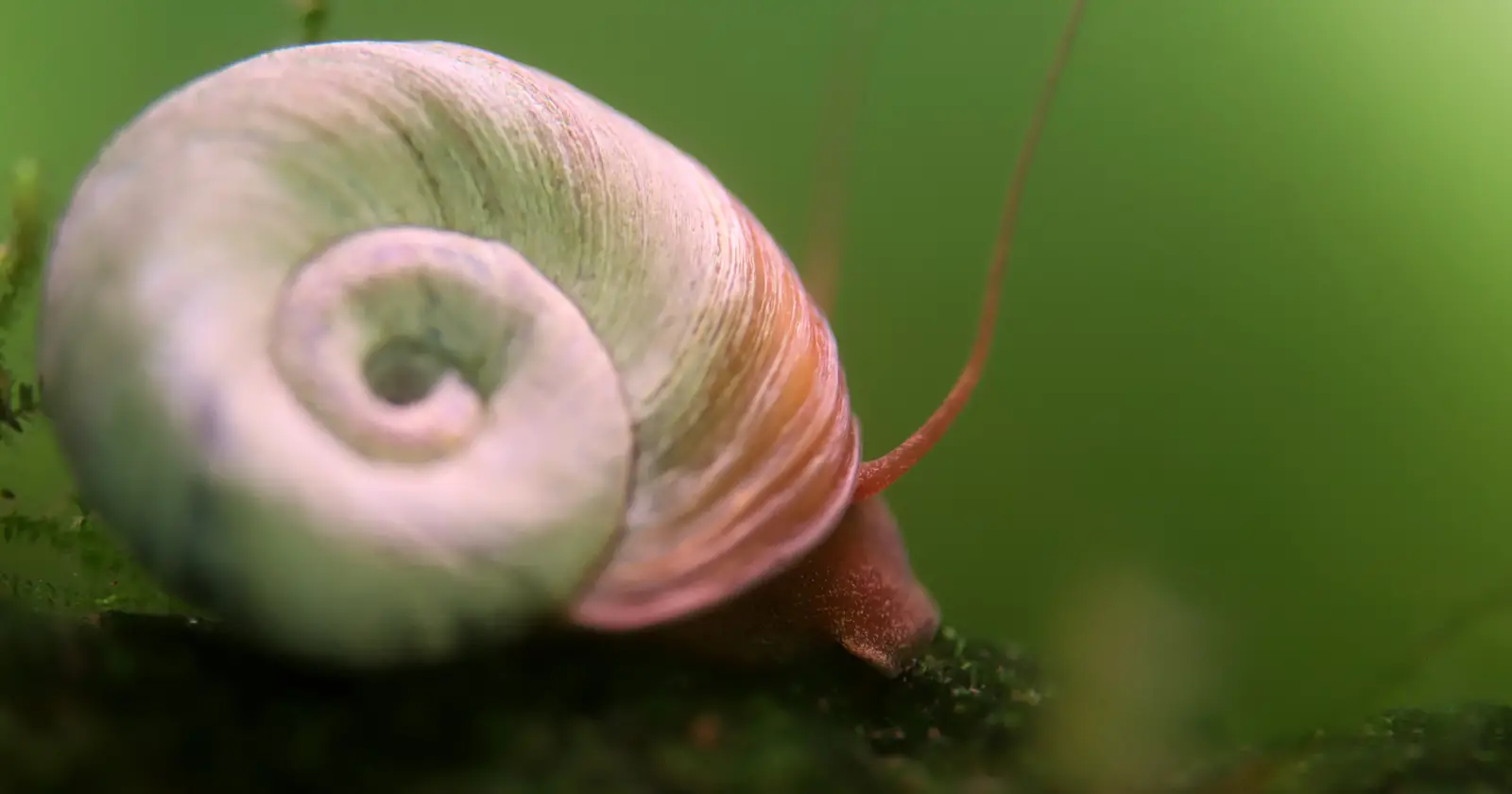
Ramshorn snails are an interesting addition to the world of freshwater snails. Hailing from the Planorbidae family, they are often deliberately introduced to established aquariums or unwittingly brought in through live plants and rocks. Their presence is fairly common in the fish-keeping community, and many aspects of their biology make them intriguing for snail enthusiasts.
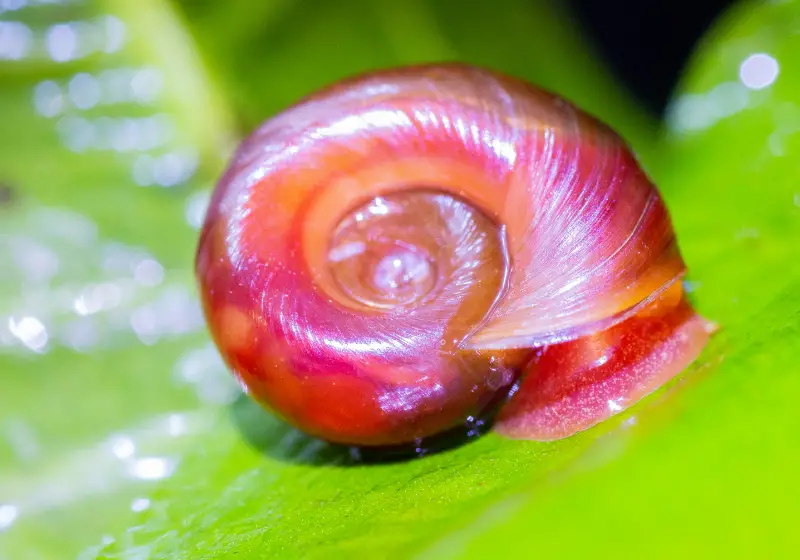
As a member of the Planorbidae family, the ramshorn snail boasts a unique shell shape that resembles a spiraling ram’s horn. Their skin can be black or red, while their shell ranges from light to dark brown. These snails make a statement in an aquatic ecosystem, drawing attention to their distinctive appearance.
The diverse species of ramshorn snails can be an asset to your aquarium, helping maintain its delicate balance. Consider adding these fascinating creatures to your tank if you want to diversify its inhabitants and create a more dynamic environment for all to enjoy.
Contents
Table of Contents
Physical Description

Color and Shape
Ramshorn snails exhibit various colors and patterns on their shells. Their colors may include shades of red, blue, and black, with some sporting a translucent appearance or distinctive leopard-like patterns. The shape of the snail’s shell is unique, resembling a flat, disc-like coil similar to a ram’s horn, as its name suggests.
This planispiral structure separates them from freshwater snails with twisted, spire-shaped shells.
Size
When it comes to size, these snails can be quite small, especially when they first hatch. Over time, they will grow, with some species reaching the size of a dime in width. As you maintain your aquarium, keeping an eye on your snails’ growth is important to ensure ample space to move and thrive within their environment.
Additionally, be aware of the potential for overpopulation in your tank, as ramshorn snails breed readily in the presence of abundant food sources.
Habitat and Geographic Distribution
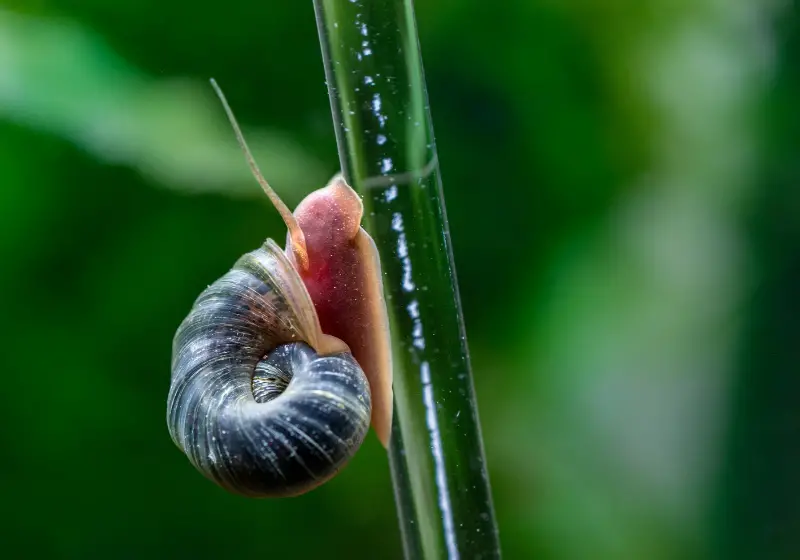
Natural Habitat
Ramshorn snails naturally inhabit freshwater ecosystems in North America, such as ponds, lakes, and streams. They thrive in slow-flowing or still-water habitats. These snails prefer a pH range of 6.8-7.5, and their distribution may be limited by salinity and pH.
In their natural habitat, they often lay eggs on spatterdock and lily pads and feed on plant matter, as they are herbivores (source).
Aquarium Habitat
In an aquarium setting, you can also house ramshorn snails. When setting up a tank for these snails, maintain a similar environment to their natural habitat. A community tank is suitable for these snails, as they are non-aggressive and can coexist with various fish and other aquatic species. To provide the optimal environment, consider the following factors:
- Tank size: A small tank is sufficient for a few ramshorn snails, but if you plan on keeping other species, ensure your tank has enough space to accommodate them comfortably.
- Water parameters: Aim for a stable water temperature, pH level, and hardness suitable for the snails, typically mirroring the conditions in their natural habitat. A pH range of 6.8-7.5 is ideal.
- Aquatic plants: Provide plenty of live plants for the snails to graze on and attach their eggs to. Floating plants like water lettuce and duckweed and anchored plants like java fern and Anubias can be excellent choices.
- Substrate: Utilize a soft, sandy, or fine gravel substrate to prevent snail injury.
Maintaining proper water parameters, providing hiding spots, and regularly cleaning the tank is essential to promote the well-being of your ramshorn snails and other tank inhabitants. By carefully considering these factors, you can successfully create a suitable environment for your snails to thrive in your aquarium.
Diet: Ramshorn Snails
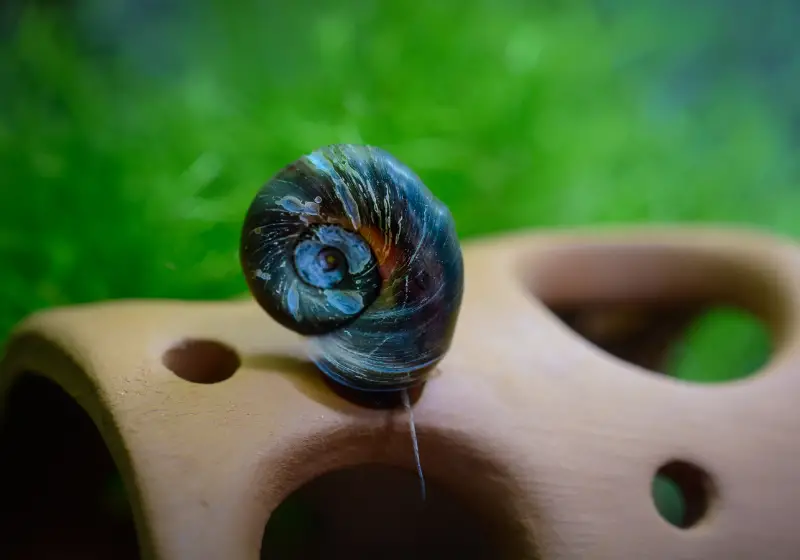
Natural Diet
Ramshorn Snails feed on various foods in their natural habitat to maintain a healthy diet. They primarily consume algae, which helps keep the aquatic environment clean. Apart from algae, these snails also devour detritus, dead plant matter, and decaying animals like dead fish. This makes them efficient cleaners that aid in maintaining a balanced ecosystem.
Fish Tank Diet
When it comes to keeping Ramshorn Snails in your fish tank, their diet remains similar to their natural habitat. However, living in a tank presents some different food sources. Ramshorn Snails will eagerly feed on the algae growing on tank walls, decorations, and substrates.
Additionally, they will eat uneaten fish that usually consists of flakes, pellets, or frozen foods. A varied diet is essential to maintain proper nutrition for your Ramshorn Snails. Here are some options for their fish tank diet:
- Algae: If your tank doesn’t have enough algae growth, you can supplement their diet with algae wafers, which are easily available at pet stores.
- Vegetables: Blanched vegetables like spinach, lettuce, and zucchini are a healthy addition to your snails’ diet.
- Protein: Occasionally, supplement their diet with protein-rich foods such as brine shrimp or bloodworms to ensure balanced nutrition.
Monitoring the food available to your snails will allow you to maintain a clean and healthy aquarium that benefits the snails and other tank inhabitants. Remember always to remove any uneaten food promptly to avoid water quality issues.
Care and Maintenance
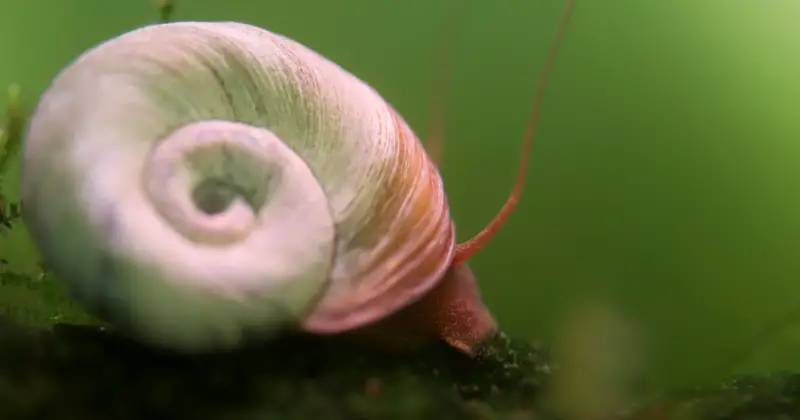
Tank Conditions
To ensure the optimal well-being of your Ramshorn snails, maintain a stable water temperature of 70 to 78°F (21-25°C) and pH levels between 7.0 – 7.5 1. Maintaining water hardness between 8.0 – 18.0 dGH is also essential 1.
Proper water parameters are crucial to their health, so be vigilant about checking ammonia, nitrate, and other water quality factors. Since Ramshorn snails are air-breathing species2, ensure adequate oxygenation by having a functional filter.
Health and Diseases
Maintaining a clean tank with proper water conditions is the first step to preventing diseases in your Ramshorn snails. Perform regular water changes and clean the substrate to minimize the buildup of waste and harmful substances.
Inspecting your snails for any visible signs of disease or changes in behavior is essential. If you notice anything unusual, watch them and consult a specialist if necessary.
Breeding
Ramshorn snails are prolific breeders. Their reproduction process is relatively straightforward, as they lay eggs within their tank3. Monitor young snails as they develop, and consider separating them into a separate tank if you wish to control their population growth. Be prepared to provide ample food sources and space for the growing snails.
Tank Mates
When selecting tank mates for your Ramshorn snails, choose peaceful fish like gouramis4. Avoid aggressive species such as crayfish and loaches, which may threaten your snails4. Maintaining a harmonious aquatic environment ensures your Ramshorn snails’ and their tank mates’ long-term health and well-being.
All about Ramshorn Snails – Why I love these fast-breeding cleaners!
Behavior and Temperament
Ramshorn snails are generally known for their calm and peaceful temperament. They are not aggressive creatures and can coexist well with other non-aggressive tank mates. Due to their gentle nature, they make an excellent addition to a community aquarium.
These snails are active throughout the day, often seen moving around the tank in search of food and algae to graze on. They are quite efficient at cleaning aquarium surfaces, and their presence helps maintain a clean and balanced tank environment.
When it comes to movement, ramshorn snails are interesting creatures to observe. Their spiral shells, which resemble ram’s horns, are used not only for protection but also provide them with a unique method of locomotion. Instead of a single foot like most snails, they have two elongated muscle-like organs called “verrucomarins” that extend around the shell. This allows them to glide smoothly along various surfaces, from the substrate to the aquatic plants and tank decor.
You might occasionally encounter a ramshorn snail that appears still and motionless. In such cases, it’s not uncommon for these snails to take a short break from their regular activity. This is usually a temporary state, and they will soon resume their normal movement and grazing behavior after a short while.
By understanding the behavior and temperament of ramshorn snails, you can ensure that you provide them with an ideal tank environment where they can thrive. Proper care and maintenance will make these fascinating creatures valuable to your aquarium ecosystem.
Unique Characteristics
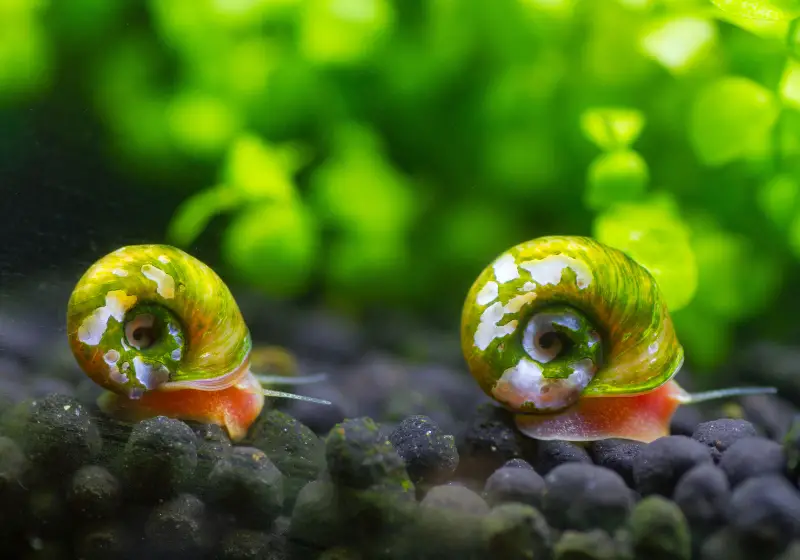
Biology and Lifespan
Ramshorn snails belong to the family Planorbidae, with Planorbarius corneus and Planorbella duryi being some of the well-known species. They are hermaphroditic, meaning each individual possesses both male and female reproductive organs. Their lifespan typically ranges from a few months to a year, depending on the species and living conditions.
Air-Breathing
One of the fascinating aspects of these snails is that they are air-breathing, with a unique ability to extract oxygen from the water. Instead of having copper-based hemocyanin in their blood like most mollusks, Ramshorn snails contain iron-based hemoglobin, making them more efficient at breathing. This makes them well-suited for living in various aquatic environments.
Shell Structure
Ramshorn snails are known for their distinctive, round, coiled shell that resembles a ram’s horn. While their shell may appear dextral (right-coiling) like most other snails’ shells, it is sinistral (left-coiling). Two different colored skin forms exist in ramshorn snails: black and red. The red ones lack melanin, a dark skin pigment, making their skin appear bright red due to the hemoglobin in their blood.
Feeding Method
These snails are scavengers, feeding on detritus, decaying plant matter, algae, and dead organisms in the aquarium. They may also eat leftover fish food, making them useful in helping keep your tank clean. Ramshorn snails have an organ called the radula, which allows them to scrape food particles.
They do not possess an operculum, a plate-like structure that seals the shell’s aperture in some snail species, making them unable to close their shells completely.
While observing your aquarium or researching these fascinating snails, remember their unique features, such as their iron-based hemoglobin and sinistral shells. The Ramshorn snail family (Planorbidae) offers a variety of fascinating species to study and appreciate.
Conclusion: Ramshorn Snails

Incorporating Ramshorn Snails into your freshwater aquarium can greatly benefit the tank’s ecosystem. These fascinating creatures help to maintain water quality and add a unique touch to the aquatic environment. As a caretaker of these snails, it’s important to provide the proper habitat, food, and water conditions for them to thrive and live up to their potential lifespan.
Ramshorn Snails, belonging to the Planorbidae family, are available in various sizes and colors, making them an attractive addition to your aquarium. They might accidentally find their way into your ecosystem, often hitchhiking on live plants or rocks, but they are considered a delightful addition to any established tank.
It’s essential to check their population growth within your tank, as these snails can reproduce rapidly. Ensure sufficient calcium in the water or through food sources to support healthy shell development and growth.
Remember, Ramshorn Snails are peaceful, meaning they coexist well with other tank inhabitants. This compatibility, along with their low maintenance requirements, makes them an ideal choice for both novice and experienced aquarists.
So, consistently taking proper care of these gastropods, you’ll welcome valuable members into your aquarium community who contribute significantly to a balanced aquatic ecosystem.
Frequently Asked Questions
What do Ramshorn snails eat?
Ramshorn snails primarily feed on algae and other debris in your aquarium. They are excellent algae eaters and will also consume dead plants and excess food particles. This makes them helpful for maintaining a clean and healthy tank environment. Aquarium Source
How to get rid of Ramshorn snails?
If you find that Ramshorn snails have infested your aquarium and you wish to get rid of them, several options are available.
Manual removal, traps, introducing snail-eating fish or Assassin snails, and adjusting your feeding habits to reduce excess food available can help control their population. Fishkeeping World
What eats Ramshorn snails?
Several types of fish and invertebrates are known to eat Ramshorn snails. These include loaches, pufferfish, certain cichlids, and Assassin snails. Introducing one or more of these species to your tank can help control the Ramshorn snail population.
However, always research the compatibility of your tank’s inhabitants before adding new species. Aquarium Breeder
How often do Ramshorn snails lay eggs?
Ramshorn snails are prolific breeders; under favorable conditions, they can lay eggs and reproduce rapidly. While there is no specific interval at which they lay eggs, they can reproduce quickly and could potentially overpopulate your aquarium if not managed properly. Aquarium Breeder
Do Ramshorn snails eat plants?
While Ramshorn snails primarily eat algae and other debris, they may also nibble on certain types of soft-leaved aquatic plants. However, they are not known to cause significant damage to healthy plants, as they generally prefer to feed on decaying plant matter.
It’s worth noting that snails may consume more plants if they do not have enough natural food sources available. Fishkeeping World
What are the benefits of Ramshorn snails in an aquarium?
Ramshorn snails can provide several benefits to your aquarium. They help keep the tank clean by consuming algae and leftover food particles, which can help maintain water quality. Additionally, they can serve as a natural food source for some fish species and add an interesting element to your tank’s community.
Despite their potential to become a nuisance in some cases, they can benefit your aquarium ecosystem with proper care and management. Aquarium Source

